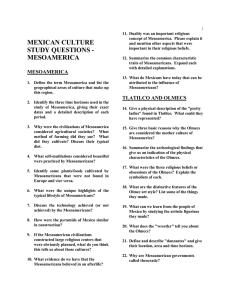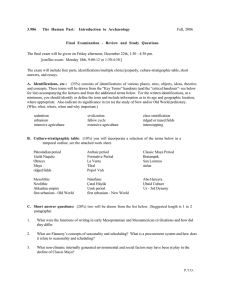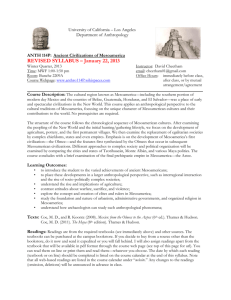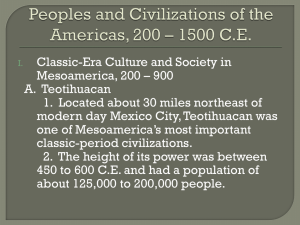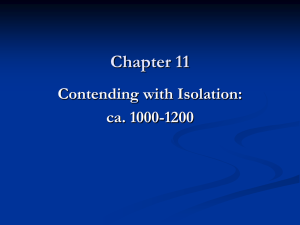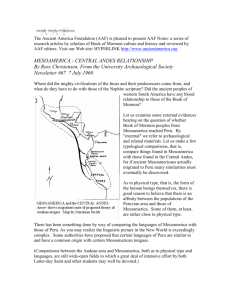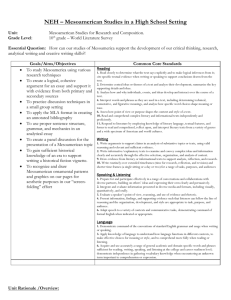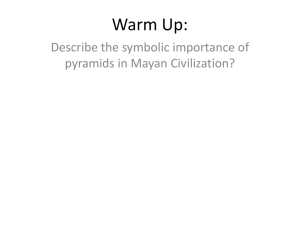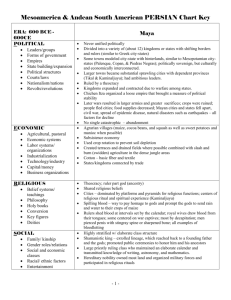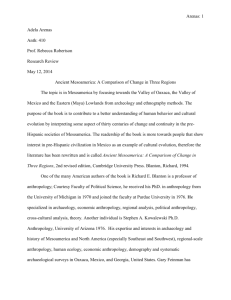ppt
advertisement
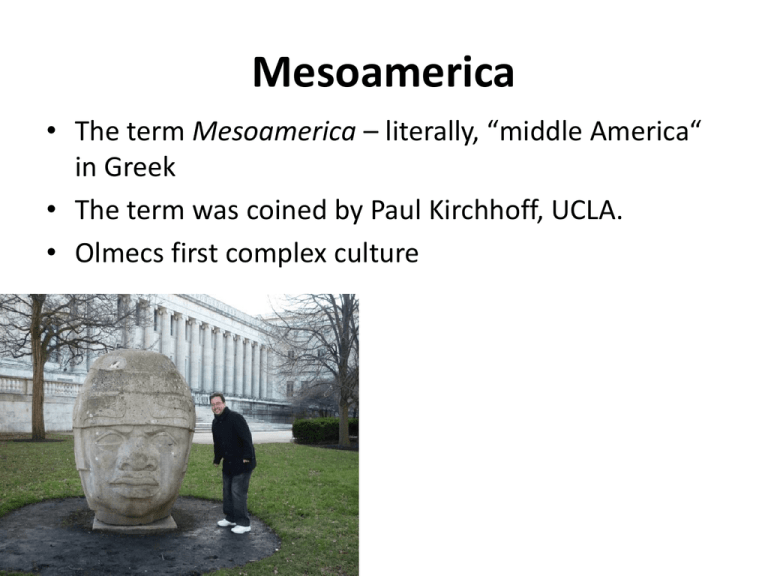
Mesoamerica • The term Mesoamerica – literally, “middle America“ in Greek • The term was coined by Paul Kirchhoff, UCLA. • Olmecs first complex culture Similarities in Mesoamerica • Pictographic and hieroglyphic writing systems. • The practice of various forms of sacrifice and a complex of shared ideological concepts. • Ball courts • The cultures were sedentary. • Agriculture relied on the cultivation of maize. • A 260 day ritual calendar • A number system base on the number 20 Cultural Diversity, 2500 B.C.E.-C.E.1500 • Mesoamerica – In Mesoamerica maize-cultivating societies emerge. – Olmecs first writing system – Trade networks and city-states follow: earliest is Teotihuacan 100-600 C.E. – Teotihuacan declines, Mayan city-states spread through southern Mexico and Central America: calendar, number and writing systems. – 1400s, Aztecs Cultural Diversity, 2500 B.C.E.-C.E.1500 • The Southwest – Hohokam and Anasazi cultures emerge. – Hohokams build extensive canal systems for irrigation: villages with several hundred people. – Anasazis dominate for 600 years: Chaco Canyon. – Droughts 12th-13th cultures decline. Cultural Diversity, 2500 B.C.E.-C.E.1500 • The Eastern Woodlands – 1200 B.C.E. Poverty Point emerges on the Mississippi River, LA (population of 5,000). • Mississppians – Mississippians become first agriculturalists by 700 C.E. • • • • Incorporates ideas from Mesoamerica Center Cahokia 13th century food shortage leads to decline. Permanent agriculture spreads the eastern tribes. Cultural Diversity, 2500 B.C.E.-C.E.1500 • Nonfarming Societies – From Alaska to northern California, Native Americans fish for salmon, dry, and store catch year-round; established permanent villages. – California Native Americans reside in permanent villages sustain themselves by collecting and grinding acorns. – Only the Mohave and Yuma Indians practiced agriculture in California 1492 • population of Western Hemisphere 75 million • North America 7 to 10 million • Hundreds of tribes and languages, CA the most diverse Native American Peoples • Kinship and Gender • Extended family far more important than nuclear family • Women farm (except in Southwest) • Spiritual and Social Values • All nature, including humanity, is interrelated suffused with spiritual powers. • Native Americans rely on reciprocity: giving gifts, trading goods in exchange for prestige, deference, authority

